LCA – Light Combat Aircraft

IMPORTANT NOTE: Aircraft has been flight-tested using a Saitek P2600 Rumble Force Gamepad for detailed handling and smoother movement. It is recommended to use a gamepad, joystick or mouse-as-joystick mode for flying this aircraft.
1) CONTROLS
• AG1: Landing Speedbrakes activation
• AG2: Gyro-stabilization activation
• AG3: Fuel Droptanks jettison
• AG4: Drag chute deployment
• AG5: GBU-12 Paveway IV jettison
• AG6: Target Pod sensor de-activation
• AG7: Formation Lights activation
• VTOL Down: Flaps deployment
• TRIM: Normal operation (Tab-Down for Pitch-Up)
2) T/O INSTRUCTION
• TRIM: 1 TAB DOWN
• THROTTLE: 100%
• Rotate aircraft at 140mph (fully loaded configuration)
• GEAR UP before airspeed reach 300mph
• TRIM: RESET and maintain climbing attitude ~15-20° nose-up
• THROTTLE: Adjust for cruising flight ~60%
• Continue Flight
3) LDG INSTRUCTIONS
• Reduce Airspeed at 250mph and below
• Align with Runway at 1.500 ft Altitude and 2NM distance
• GEAR DOWN
• THROTTLE: 15-20% (depends on weight)
• AG2: Activate for Gyro-stabilization
• AG1: Activate for Air-brake extension
• VTOL: FULL DOWN gradually
• TRIM: FULL DOWN gradually
• Establish reasonable Rate of Descent (4-5 m/s)
• Airspeed 120-145mph (depends on weight)
• Make corrections using small THROTTLE movements (~1-3%)
• Maintain Attitude 1°-3° Nose Up
• 20ft before Touchdown add 3-5% Throttle for Flare technique
• At Touchdown: THROTTLE – 0% and AG4 for Drag Chute (if needed)
• When all wheels on ground and airspeed below 100mph - APPLY FULL BRAKES
• At speed below 20mph use nose wheel steering
• Maintain ground directional stability with slight yaw inputs
4) WEAPONS

CAUTION POINTS for Air-to-Ground weapons:
• Weapons Release Velocity: 180-500mph
• Recommended Throttle setting: 50%-80%
• Keep target in front of 3-9 line
• Target always SLIGHTLY BELOW AIRCRAFT’S LINE OF SIGHT
• DO NOT fire any weapons with downward movement or excessive sink rate
• IT’S NOT ADVISED TO JETTISON EXTERNAL STORES UNDER NEGATIVE HIGH-G LOADING & AT HIGH SPEEDS (>600mph)
Weapons Firing Procedures
AIR-TO-GROUND
GBU-12/NG Paveway IV (Laser-guided/GPS-aided precision strike munition)
(Middle wing-pylons)
• Select Air-to-Ground target mode
• Select Cleaver type weapon
• Recommended Alt: >3.000ft over target
• Recommended Speed: >200mph
• Recommended Throttle setting: 40-80%
• Acquire target (steady red target box)
• Fire weapon
----------------------------
AIR-TO-AIR
IRIS-T (Medium-Range I-IR Air-to-Air Missile)
(Outer wing-pylons)
• Select Air-to-Air target mode
• Select Interceptor type weapon
• Acquire target (steady red target box)
• Fire weapon
>>>>>>>>>
TJ-10A Rattler (short-range I-IR A/A missile)
(Wingtip-rail pylons)
• Select Air-to-Air target mode
• Select Guardian type weapon
• Acquire target (steady red target box)
• Fire weapon

5) AIRCRAFT OVERVIEW
The HarpiaDS FA-61C/D Combat Tercel is a modern twin-engine military light attack aircraft and combat variant of the advanced jet trainer T.101A Tercel. A series of modifications such as the Adaptive Leading-Edge Slat System (ALESS) and the strengthened fuselage and wing structure allowed the aircraft to be fitted with modern avionics and battle equipment and perform a wide variety of low-intensity combat missions.
In the light combat role, the FA-61 is armed with six wing pylons, two wingtip rail-pylons and one under-fuselage pylon, thus transforming the Tercel trainer into a combat-capable dual-role variant. In late 2018, a series of armed tests involving the TJ-10A and IRIS-T missiles took place and a series of software upgrades extended the capability of carrying and firing the Paveway series air-to-ground precision guided munitions (PGM).
The FA-61 is powered by a pair of HarpiaDS AeneasX TFJ-200-KB2 high by-pass turbofan engines that produce 15% more thrust than the TFJ-100 variant and it is capable of transonic flight and high-energy maneuvering in full combat load. The FA-61 was designed from the onset to accommodate additional operational capabilities, including combat missions such as close air support and air policing duties.
A modular avionics architecture is employed, allowing for new equipment and systems to be incorporated and increasing the type's growth potential. The aircraft is equipped with GPS/INS embedded systems, which offer multiple functions such as the coupling of the navigation and attack system. The communication systems include VHF/UHF transceivers, IFF transponder, and Automated Ground Collision Avoidance System (AGCAS).
The FA-61 can be equipped (in full combat mode) with a total of nine hardpoints, capable of carrying external loads up to 8,500lbs totaling a gross weight up to 28,500lbs while maintaining a high thrust-to-weight ratio. The radar cross-section of the Combat Tercel in a standard configuration is reportedly 14 square meters due to the angled design of the fuselage and air inlets. The self-protection system includes a radar warning receiver, flares and chaff dispensers, and active electronic warfare and jamming systems, all provided by HarpiaDS, forming the Iron Cloud™ advanced ECM protection suite. The Combat Tercel variant is equipped with an advanced Sphinx R-6G/FC Doppler-type targeting and fire-control radar and optionally installable equipment upon the FA-61 includes a wide range of targeting pods, tactical datalink systems, and multi-mode AESA radar. The FA-61 can be externally fitted with Harpia’s latest targeting/imaging and low-level navigation pods to further improve the fighter's ISTAR, RECCE, and target-sharing capabilities. Other improved weapon systems include SPICE multifunctional guidance kits, JDAM, JDAM-ER for more comprehensive air-to-ground operations, and AIM-120 missiles for BVR air-to-air operations. The FA-61 Combat Tercel has provisions and can fully integrate both Python and Derby missiles, produced by Rafael in Israel, and other anti-ship missiles, stand-off weapons, and sensors.
Combat missions can be performed quite fast and effective by the FA-61C/D, as it has been designed to be rapidly reconfigured in the field into a combat aircraft capable of performing ground attack, anti-shipping, and aerial combat missions, in a "home defense" capacity. Various munitions can be carried, including a single 20mm cannon, IRIS-T, AIM-9 Sidewinder or TJ-10A Rattler air-to-air missiles, various air-to-surface missiles, anti-ship missiles, free-fall and laser-guided bombs and rockets, reconnaissance pods, and electronic warfare pods. The aircraft has a maximum range of 1,650 nautical miles when outfitted with a maximum of two external fuel tanks and this can be extended via a fixed refueling probe for in-flight refueling. Compatible air-to-surface weapons include the AGM-65 Maverick missile, AGM-144R Blackout anti-radiation missile, ASM-76D Stormspike anti-ship missile and Mk-82, -83, and -84 general purpose bombs with relevant guidance kits.

HarpiaDS promotes the FA-61 Combat Tercel as a light attack aircraft also suitable for COIN and CAS missions and destined for low-budget clients with needs of affordable and efficient modern fighter jets. The aircraft is being marketed for export to South American and South-East Asian countries, and is claimed to be able to carry out operational missions at far lower costs than those of advanced front-line fighters.
Taiwan is looking to replace its current fleet of jet trainers with 60+ advanced trainers with combat capability, and released a request for information (RFI) and HarpiaDS responded including the Tercel Integrated Training System to the request alongside the FA-61 aircraft.
The FA-61 is also being offered to Croatia, which is deciding on a replacement for its aging fleet of MiG-21BIS aircraft.
The Argentine Air Force is evaluating the FA-61 Combat Tercel as a potential new platform for CAS/COIN missions in order to replace the obsolete FMA IA 58 Pucará and the non-upgradable FMA IA-63 Pampa aircrafts.
The Royal Malaysian Air Force has expressed its intensions to acquire a light combat aircraft that also can serve as a lead-in fighter trainer (LIFT) platform and should be ready for fielding in 2021/22. RMAF’s officials noted that other aircrafts are also being considered but a preference for the FA-61 Combat Tercel has been expressed due to HarpiaDS industrial sharing partnership initiative for international customers.
Variants
FA-61C/D Combat Tercel: Single and twin-seat version of the FA-61 for the RoCAF (Taiwan).
FA-61CR Jadran: Candidate for the Croatian Air Force light fighter jet program, based on the FA-61.
TA-101AR Silver Tercel: Revised combat version of the FA-61 for the Argentine Air Force, similar to T-101A trainer but with limited ground combat capability.
FA-61M WarHawk: A single seat multirole fighter variant that is candidate for the Royal Malaysian Air Force light combat aircraft program, based on an advanced combat version of the FA-61 with many avionics upgrades and enhanced EW survivability.
Credits
udyog for his excellent Target Pod design of his HAL Tejas MK1 aircraft, that I upgraded with a rotating optronics head.
xjm22 for his air-to-air missiles.
closeairsupport for his IRIS-T missile design.
Indecision for his F-55 Lammergeier wing design that I used as a basis for the new FA-61 wing structure.
EternalDarkness and ChiChiWerx for their excellent building advises and sincere test-flying feedback.
Specifications
Spotlights
- Mumpsy 6.4 years ago
General Characteristics
- Created On Windows
- Wingspan 38.4ft (11.7m)
- Length 50.9ft (15.5m)
- Height 19.0ft (5.8m)
- Empty Weight 10,126lbs (4,593kg)
- Loaded Weight 25,629lbs (11,625kg)
Performance
- Power/Weight Ratio 4.208
- Wing Loading 35.9lbs/ft2 (175.2kg/m2)
- Wing Area 714.1ft2 (66.3m2)
- Drag Points 8347
Parts
- Number of Parts 820
- Control Surfaces 8
- Performance Cost 3,258

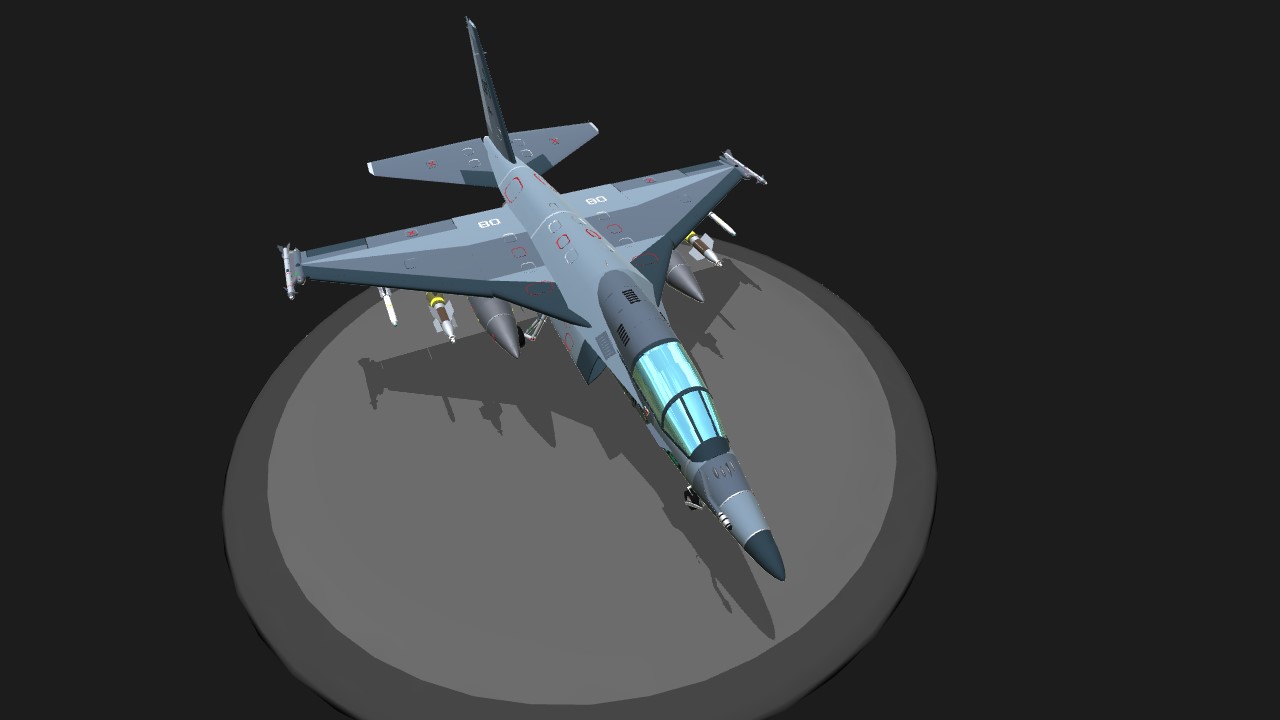
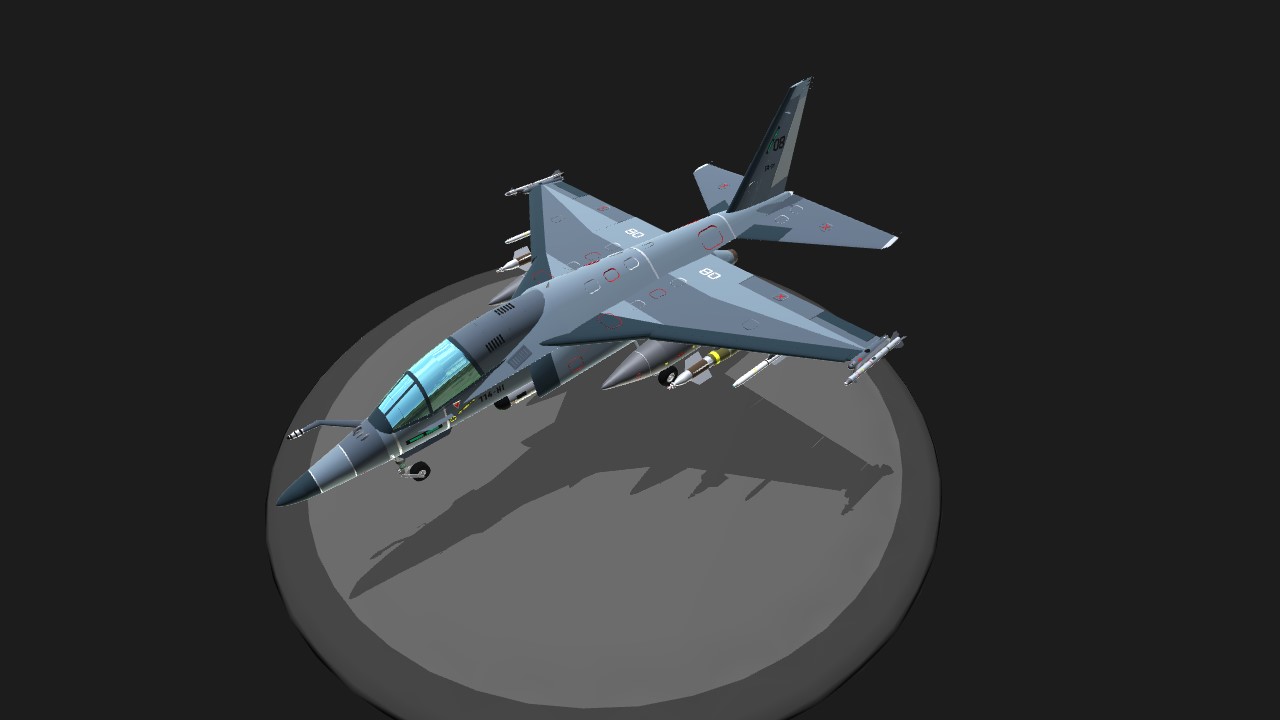
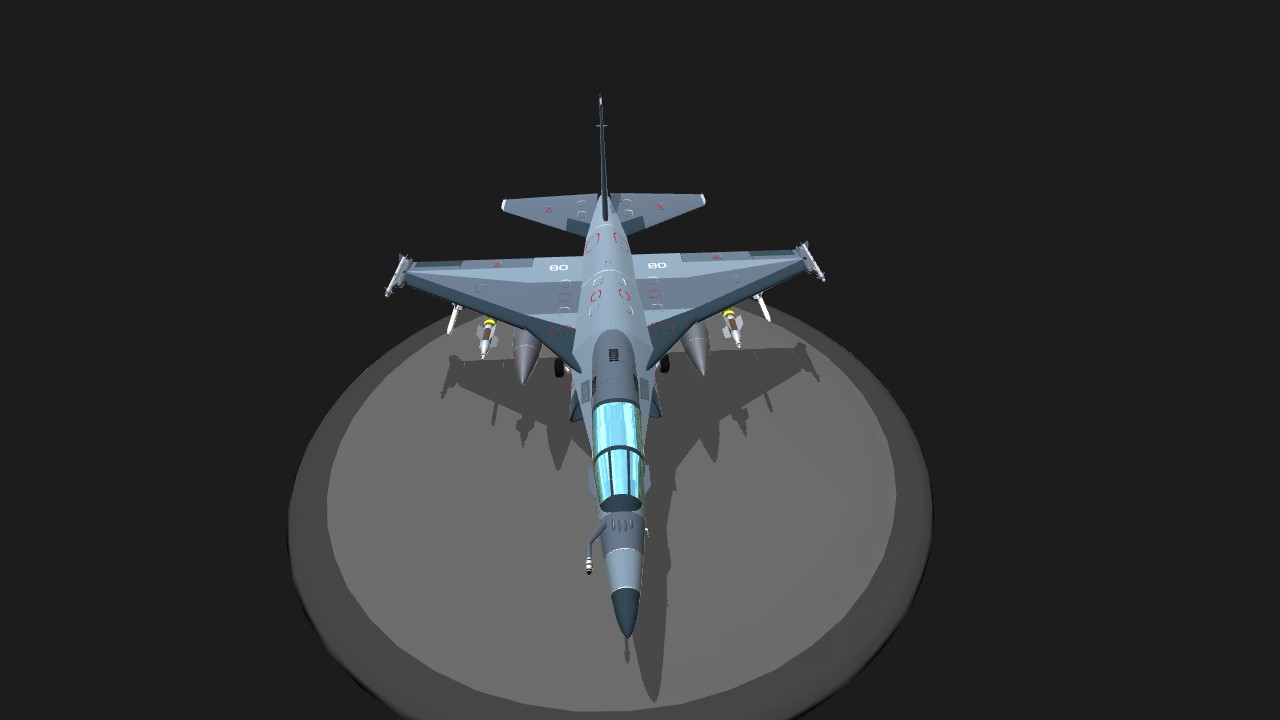
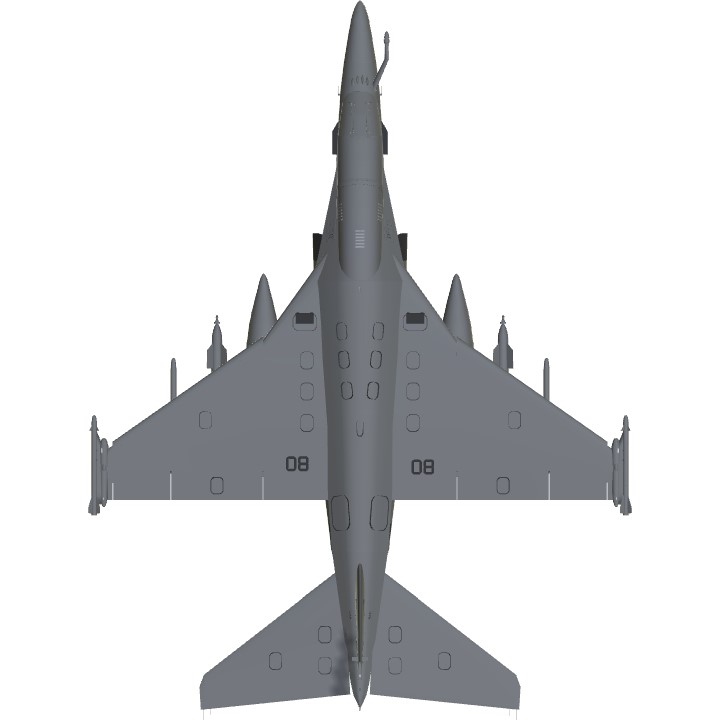
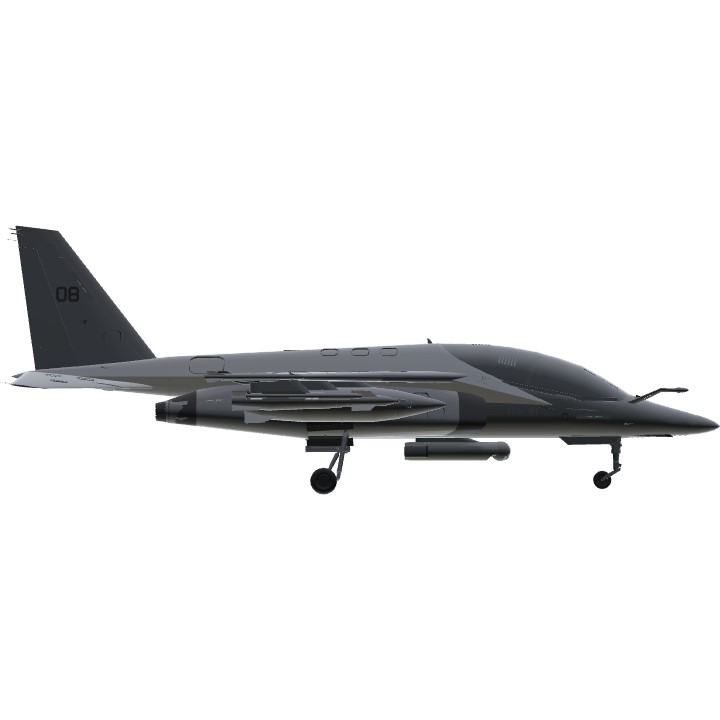
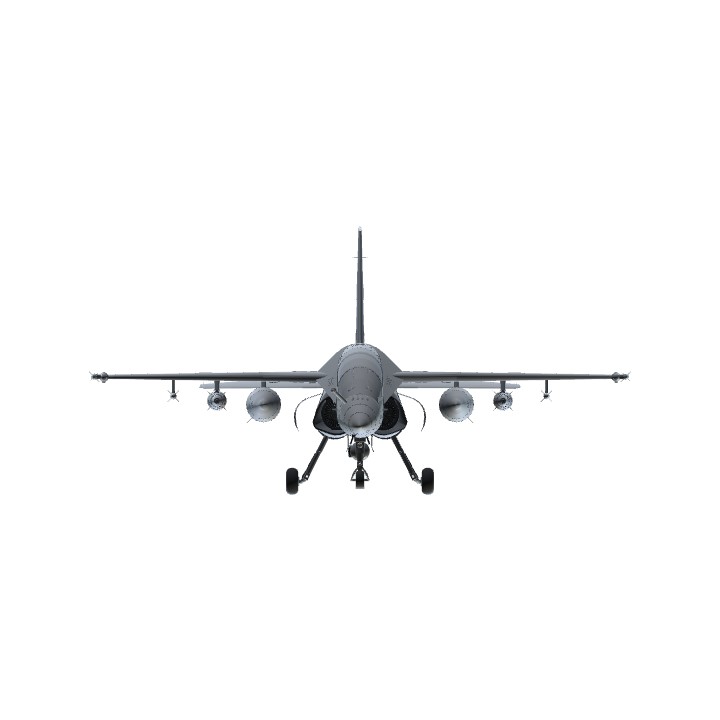
This is what happens when an engineer plays simpleplanes for fun.
Kewl.
Unimaginably excellent job not only on the aircraft, the the description itself too!